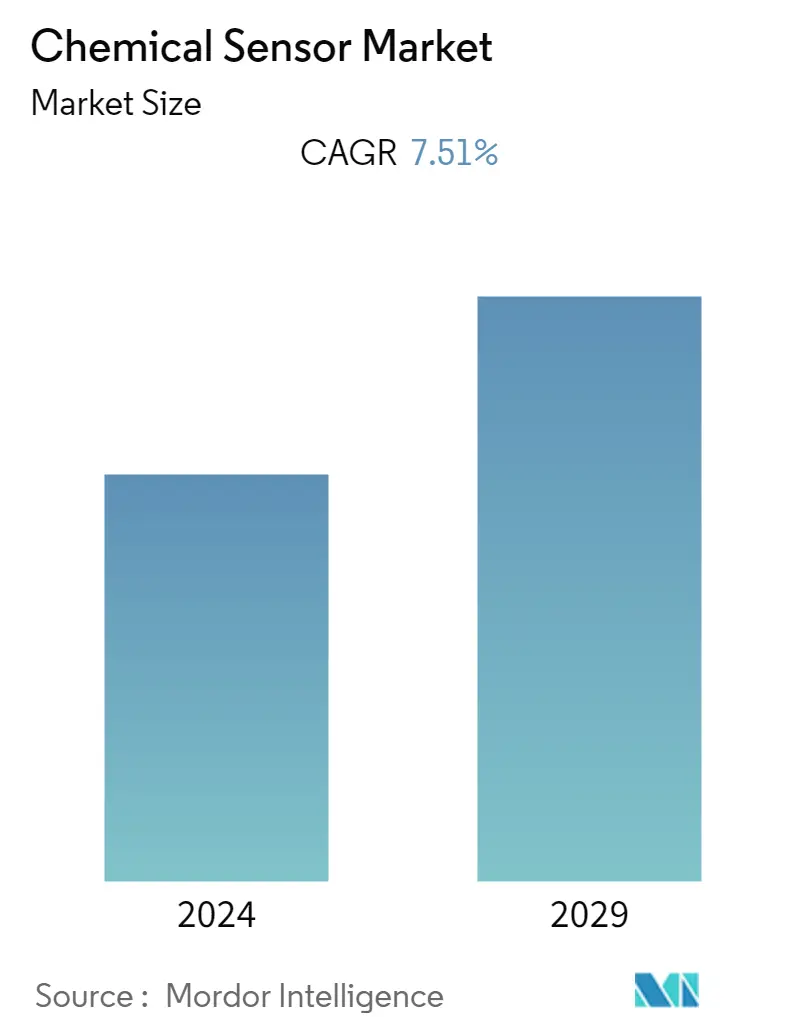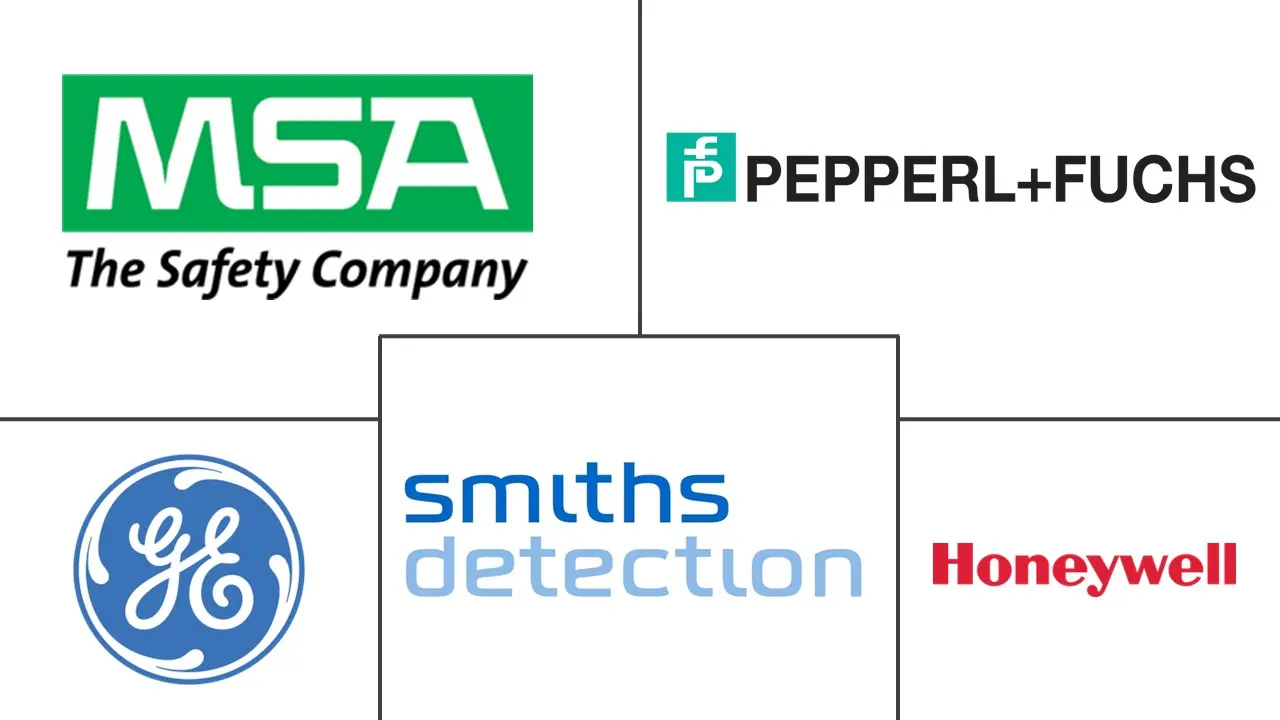Market Size of Chemical Sensor Industry

| Study Period | 2019 - 2029 |
| Base Year For Estimation | 2023 |
| CAGR | 7.51 % |
| Fastest Growing Market | Asia-Pacific |
| Largest Market | North America |
| Market Concentration | Medium |
Major Players
*Disclaimer: Major Players sorted in no particular order |
Need a report that reflects how COVID-19 has impacted this market and its growth?
Chemical Sensor Market Analysis
The chemical sensor market is expected to grow by registering a CAGR of 7.51% during the forecast period. Chemical sensors are in high demand because pollution is getting worse and there are more uses for them in the healthcare industry.
- The adoption of chemical sensors is attributed to the increasing applications of these sensors in analyzing the chemical composition of different samples. The low cost and portable nature of chemical sensors, such as higher-order orthogonal sensors, are significant trends in the global market and are expected to fuel the growth of the market studied.
- The primary benefit of chemical sensors is their resistance to challenging environmental factors (such as electromagnetic interference, high temperatures, and high pH levels) and their ability to operate without an electrical connection to the sample. These characteristics have led to the creation of many fibre-optic chemical sensors for analytical purposes in the clinical, environmental, and industrial domains.
- In addition to environmental issues, the market is integrating the use of chemical sensors for analytes in the chemical industrial process. Sensors are being used as cutting-edge equipment in the healthcare, research labs, and defense industries, driving the market.
- Optical sensors rely on variations in optical analysis (light intensity or wavelength) due to analyte-transducer interaction. The interaction causes changes in the ambient light levels. To determine whether an analyte was present, the physical quantity of light was measured and transformed into electrical signals.
- Also, traditional sensors are less accurate at measuring low-concentration chemicals in the oil and gas industries because they are hard to maintain, need shelter rooms with air conditioning, need to be recalibrated often, and can be affected by other chemicals.
- Even though sales of chemical sensors will be high and demand will remain steady, the growth of the global market is expected to be slowed by their fluctuating prices.
- The COVID-19 epidemic significantly impacted the worldwide market for chemical sensors. Lockdowns were implemented by governments all over the world as a preventative measure. Due to this, all businesses in the automobile industry were temporarily suspended. There was a lack of the raw materials and components needed for manufacturing automobiles as a result of disrupted supply chain operations. This limited the demand for the production of chemical sensors, which have numerous uses in the automobile industry. As a result, the pandemic saw moderate expansion in the global chemical sensor market.
